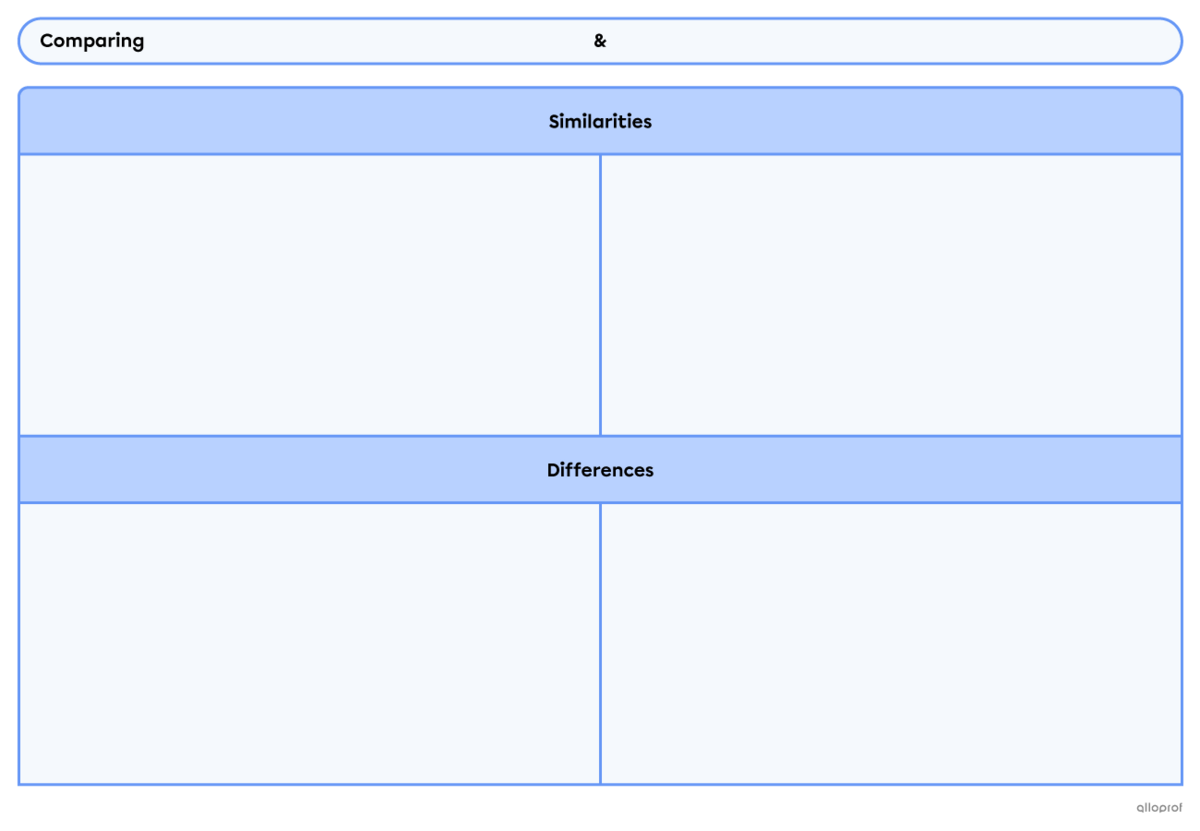Reading guides are printed or electronic worksheets used by readers to:
-
take notes
-
organize information
-
visually identify key elements
They can be used for personal readings as well as for assigned readings.
According to their format, they can be used before, while and/or after reading:
Using reading guides is an effective strategy for improving reading skills.
Reading guides allow readers to:
-
ask themselves important comprehension questions.
-
monitor their comprehension of texts.
-
identify the key elements of texts.
-
clearly organize the ideas presented in texts.
-
think about the information they are reading.
There are several formats of reading guides.
Each format can be adapted according to:
-
the reading purpose
-
the type of reading
Fiction reading guides often include:
-
character descriptions
-
story events (listings & descriptions)
-
story themes & symbols
-
vocabulary definitions
-
thoughts and notes
Nonfiction reading guides often contain:
-
important information
-
summaries
-
thoughts and notes
-
comparisons between concepts/ideas
Character profiles in reading guides are used to note down information about a fictional character.
What is usually found in character profile worksheets:
-
Name of the character
-
Age
-
Role in the story: protagonist, antagonist, sidekick
-
Occupation
-
Relationships to other characters
-
Character-defining quote(s)
-
Likes/dislikes
-
Psychological traits
-
Physical traits
-
Character-defining actions

Reading guides can also be used to compare characters.
Here is an example of a Venn diagram used to compare the features of two story characters.
Here are things that can be compared:
-
Physical traits
-
Psychological traits
-
Background
-
Beliefs/Values
-
Behaviours/Ways to express themselves
-
Relationships
-
Dialogue
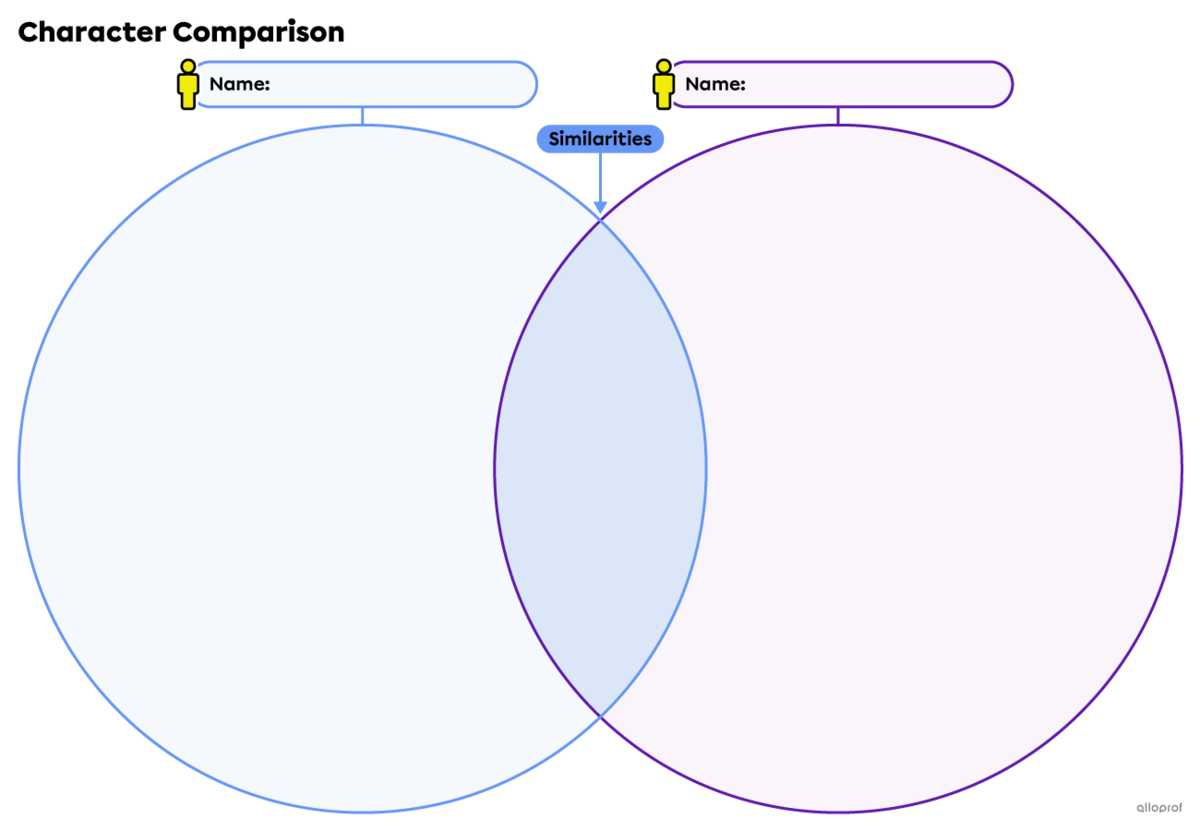
Timelines* can be used as reading guides to note down the progress of:
-
a story by ordering the key events.
-
a character’s actions in a story (to illustrate character growth).
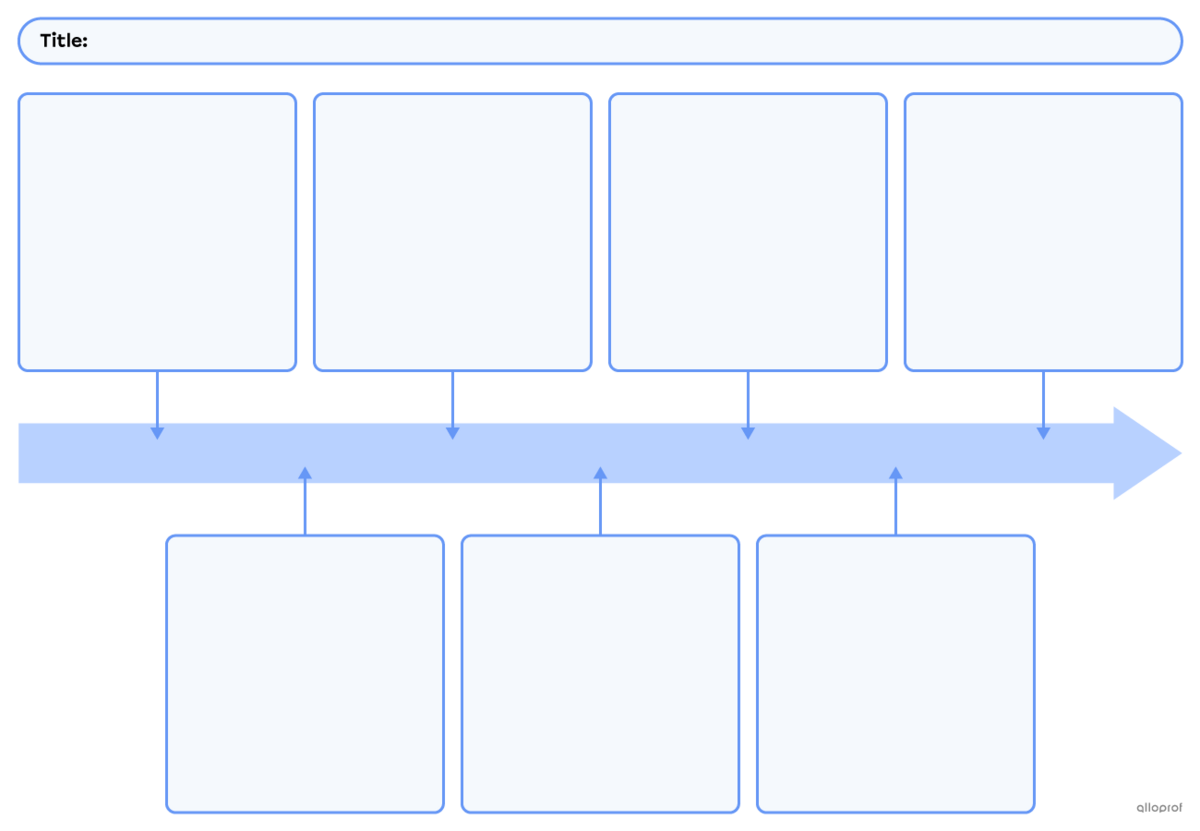
*Timelines can also be used with nonfiction texts to order historical events, instructions and progression.
Reading guides can be used to understand the main events of a story.
A Plot diagram is an effective tool to visually organize and understand the six main stages of a story:
-
Exposition: introduction
-
Conflict: disturbing element
-
Rising action: events building suspense
-
Climax: point of no return
-
Falling action: results of climax
-
Resolution: conclusion
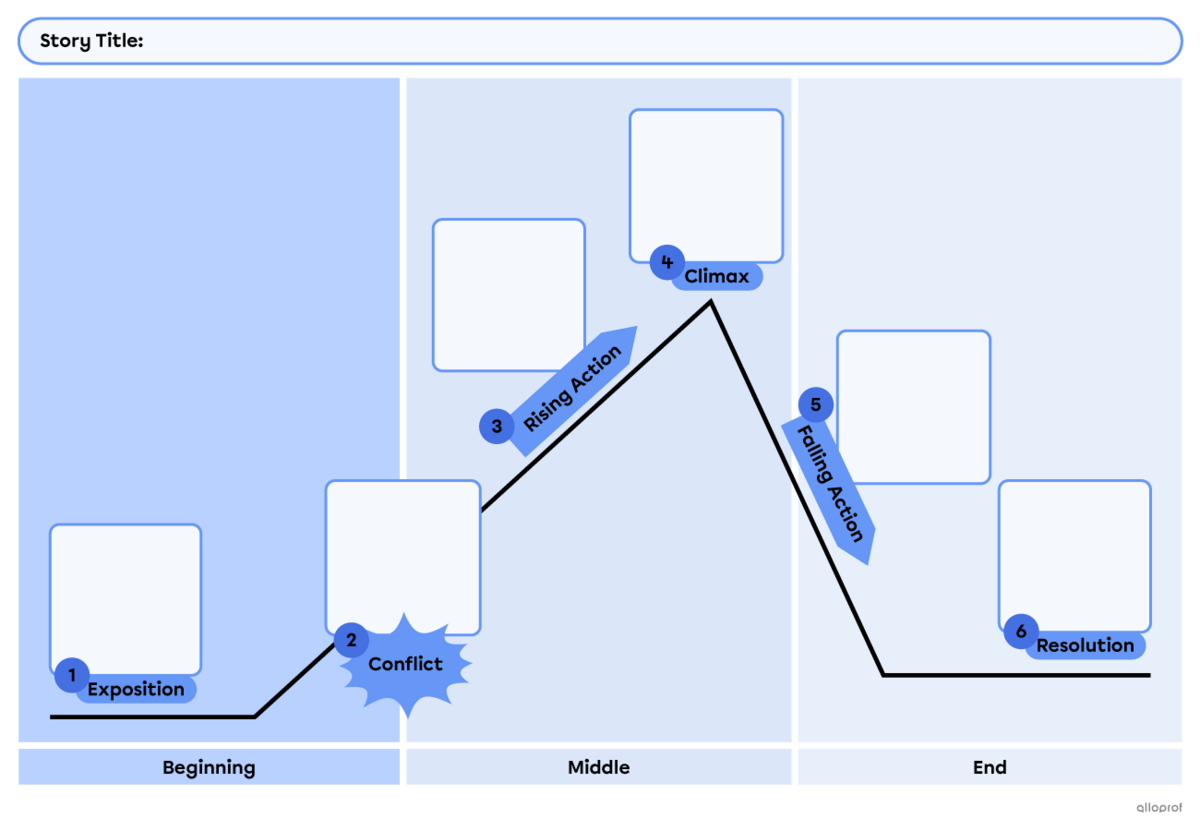
Reading guides can be used to summarize book chapters or sections.
What is usually found in chapter/section summaries:
-
Chapter/section number or title
-
Setting: location, time and context of the story
-
Characters: protagonist, antagonist, sidekicks
-
Vocabulary: important, learned, searched words
-
Events: plot points
-
Thoughts: opinion, interrogation and reactions
-
Predictions of what will happen in the next chapter.
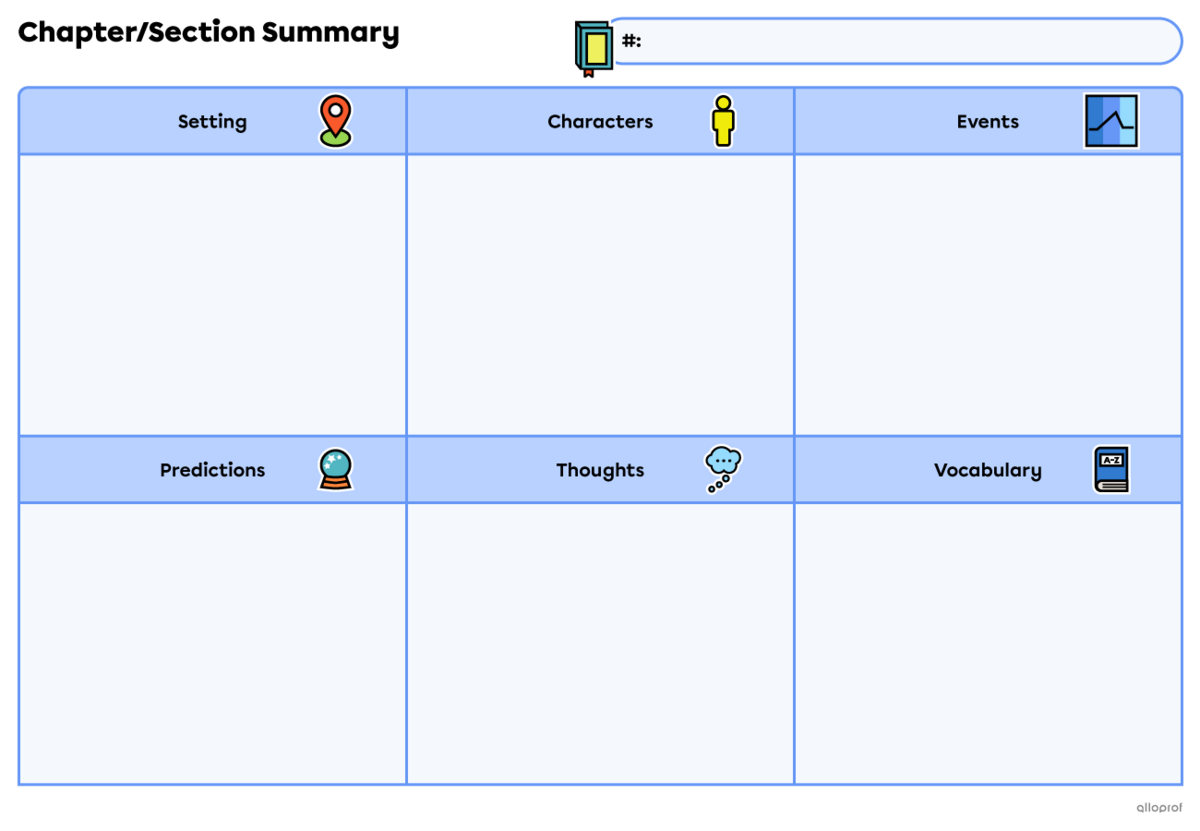
Reading guides can be used to visually organize a book’s main information.
What is usually found in a book report worksheet:
-
Title
-
Author(s)
-
Genre(s): adventure, romance, science fiction…
-
Theme(s): central idea or topic of the story
-
Setting: location, time and context of the story
-
Plot: summary of key plot points
-
Characters: protagonist, antagonist, sidekicks
-
Thoughts: opinion, interrogation and reactions
Here is an example of a book report done with a concept map*.
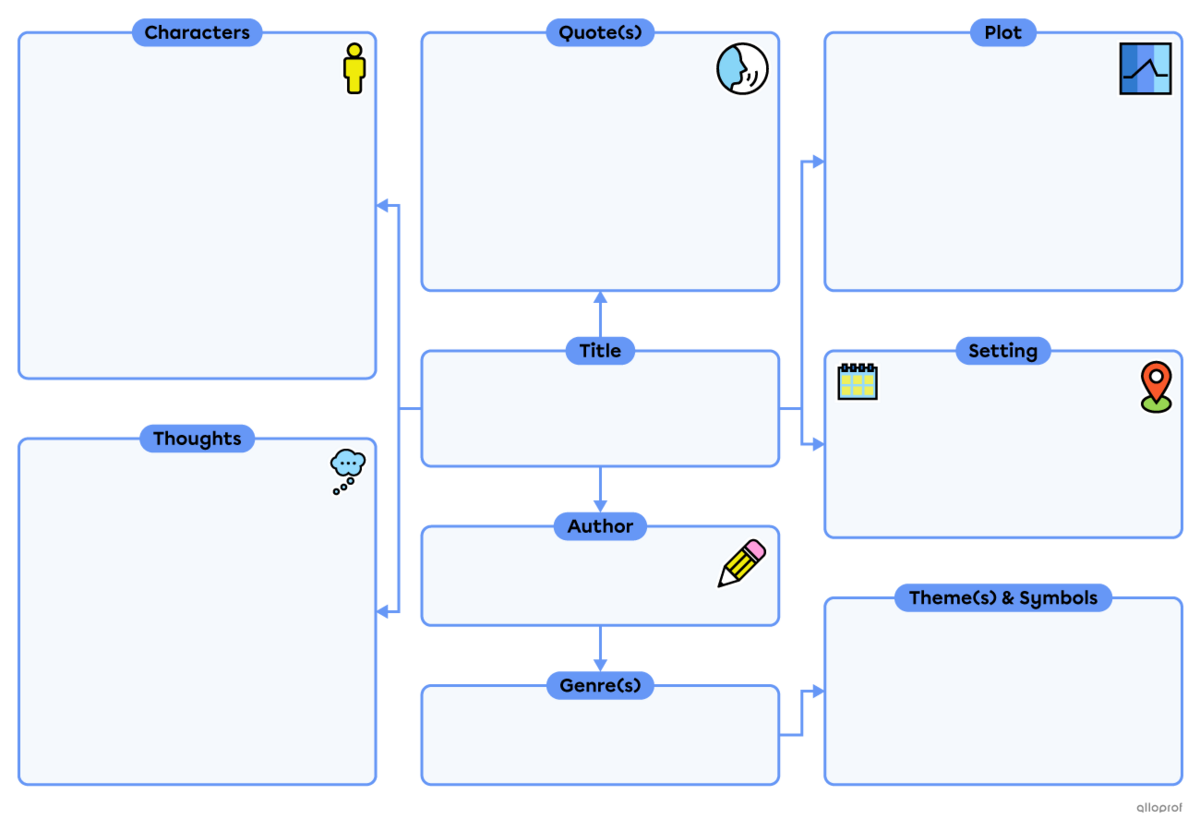
*Concept maps can also be used as nonfiction reading guides.
Here’s another example of a book report worksheet.
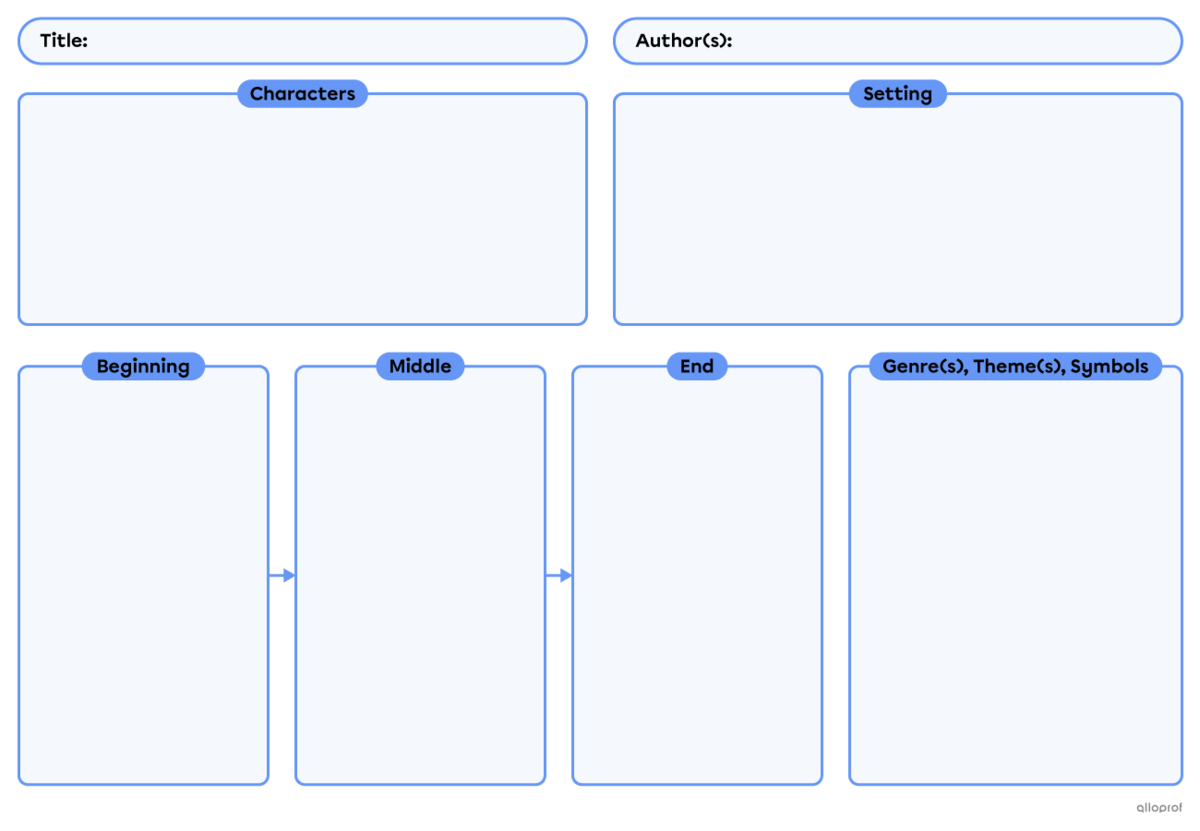
When reading nonfiction, there are several ways to take notes about a topic and organize the information found in the text.
Below are examples of reading guides that can facilitate note-taking.
Using KWL charts is an effective way to take notes about a topic and organize information.
KWL charts are graphic organizers used before, during and after reading.
They contain three sections:
K: What I already know.
Before reading:
-
activate prior knowledge
-
write down what you already know about the topic
W: What I want to know.
Before reading:
-
reflect on what you would like to learn about the topic
-
write any questions you have about it
L: What I learned.
During and after reading:
-
note down relevant information about the topic.
-
complete the chart by writing down what you learned.

Here’s a template example to organize information when taking notes.
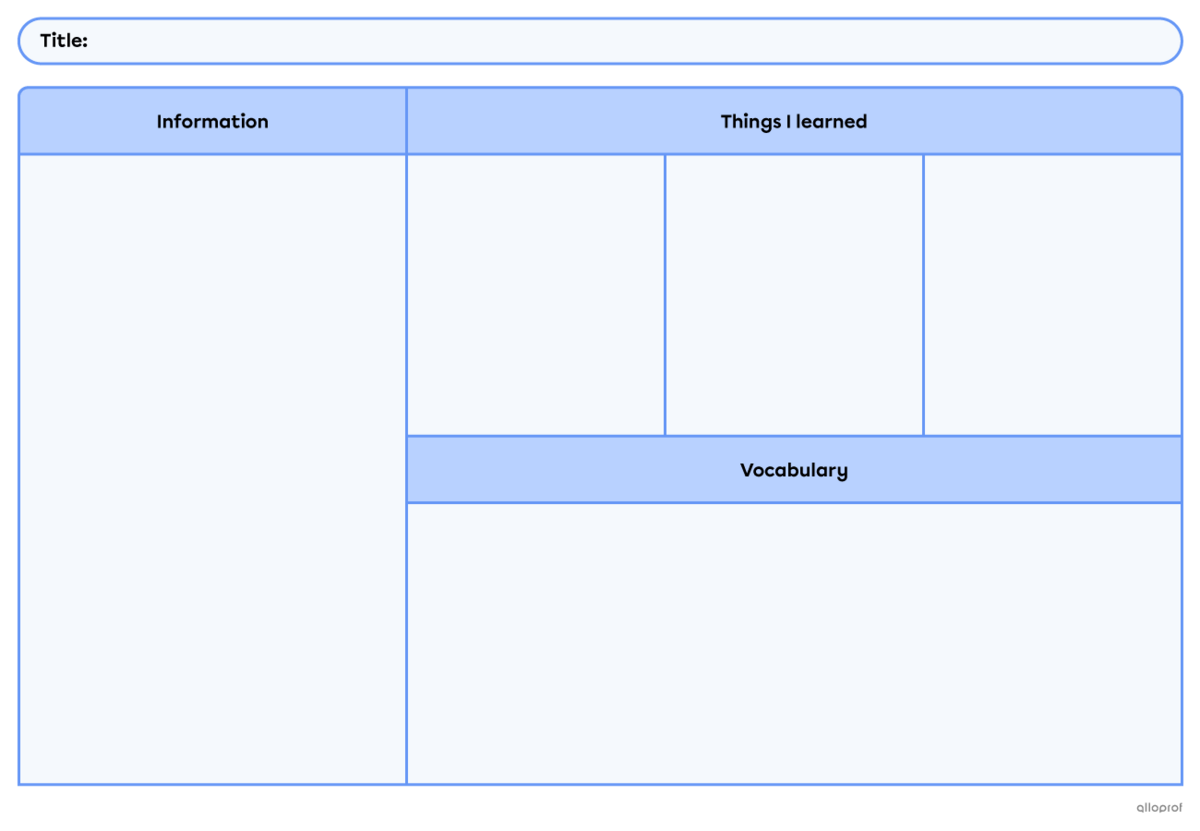
Venn diagrams are effective tools to visually compare two topics/concepts.
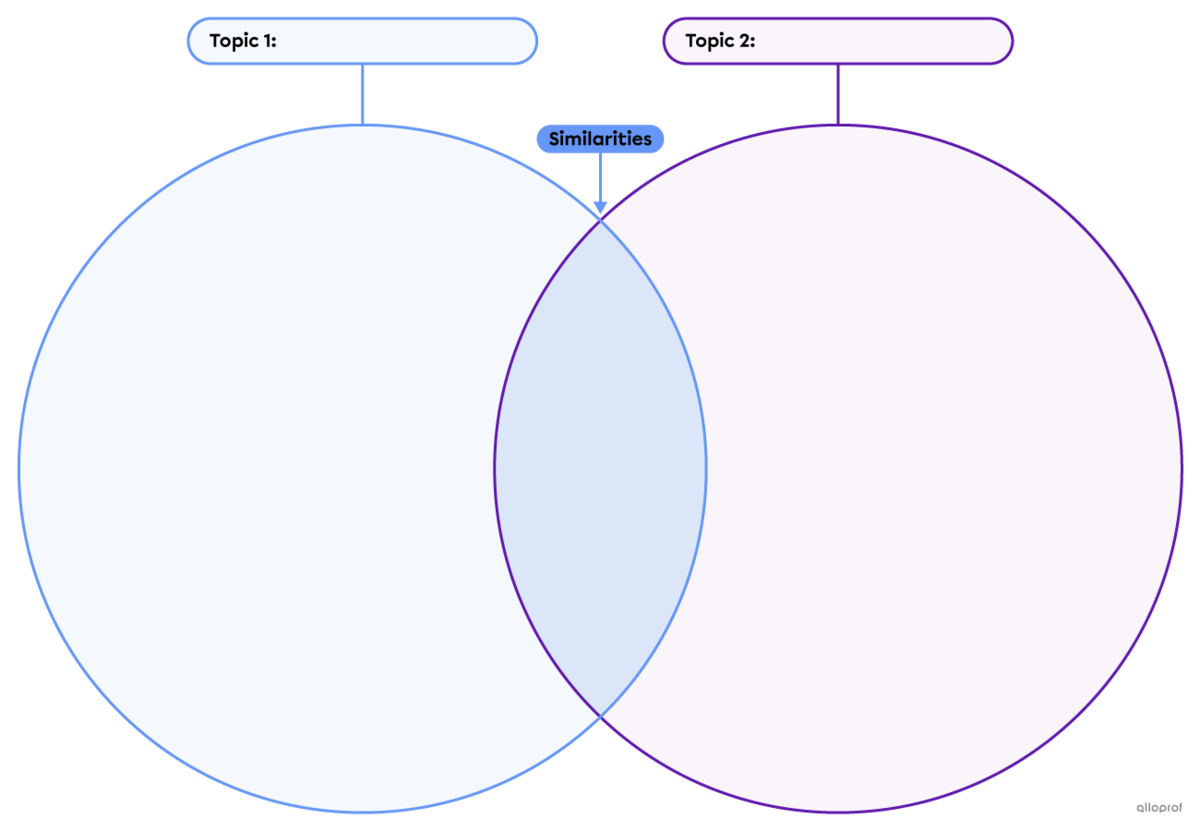
Here’s another way to compare concepts.
